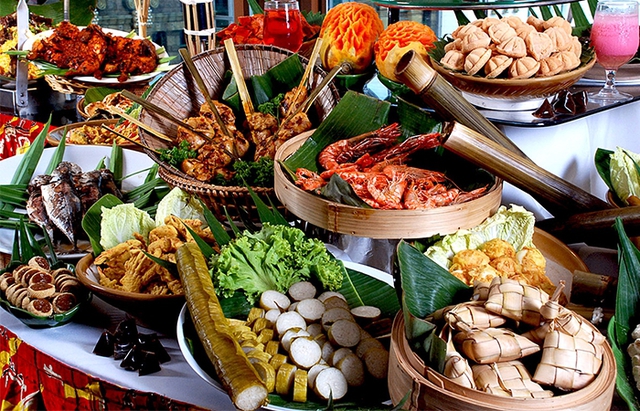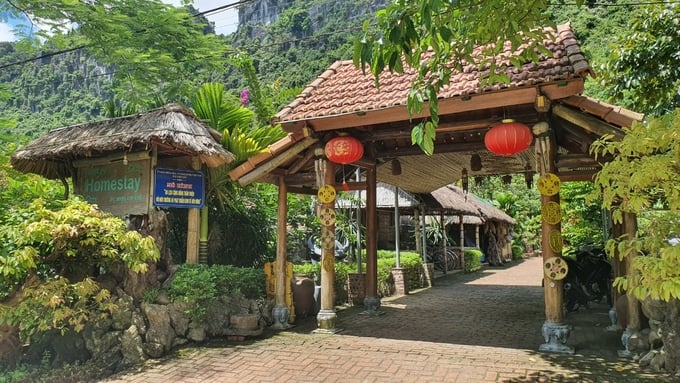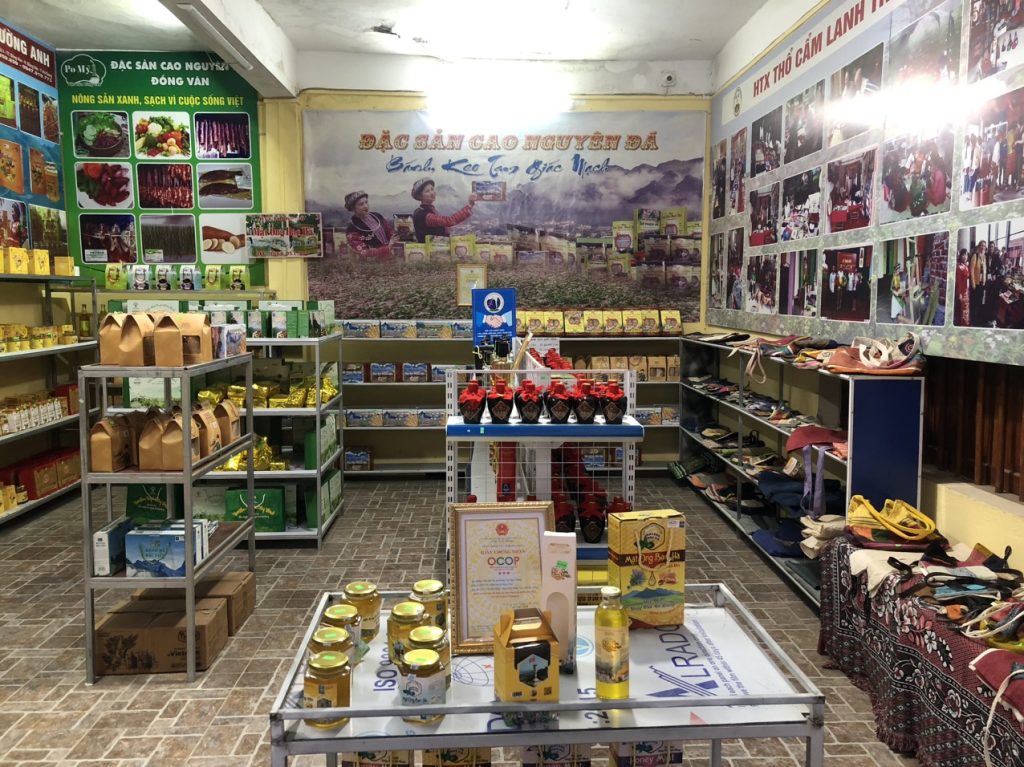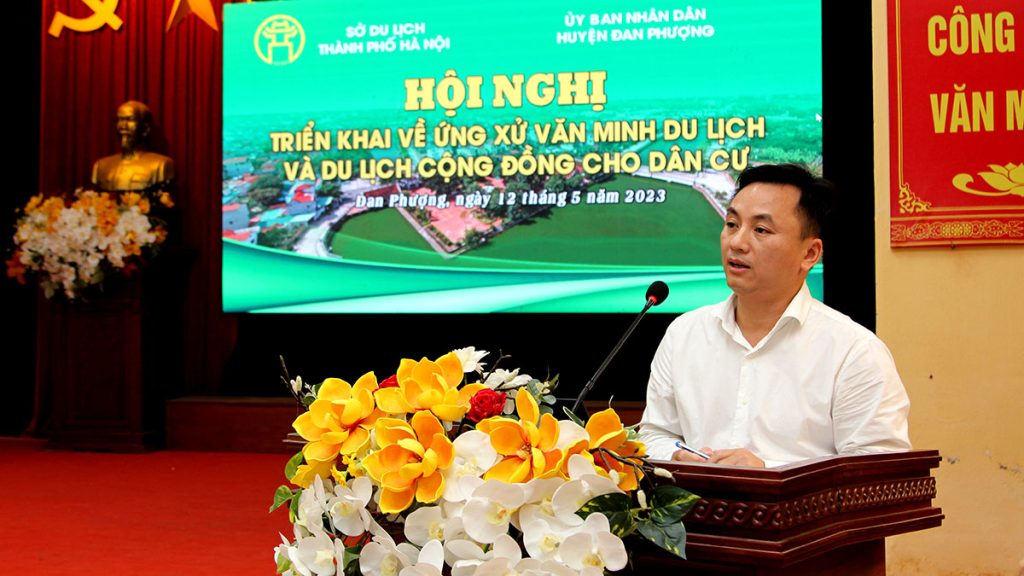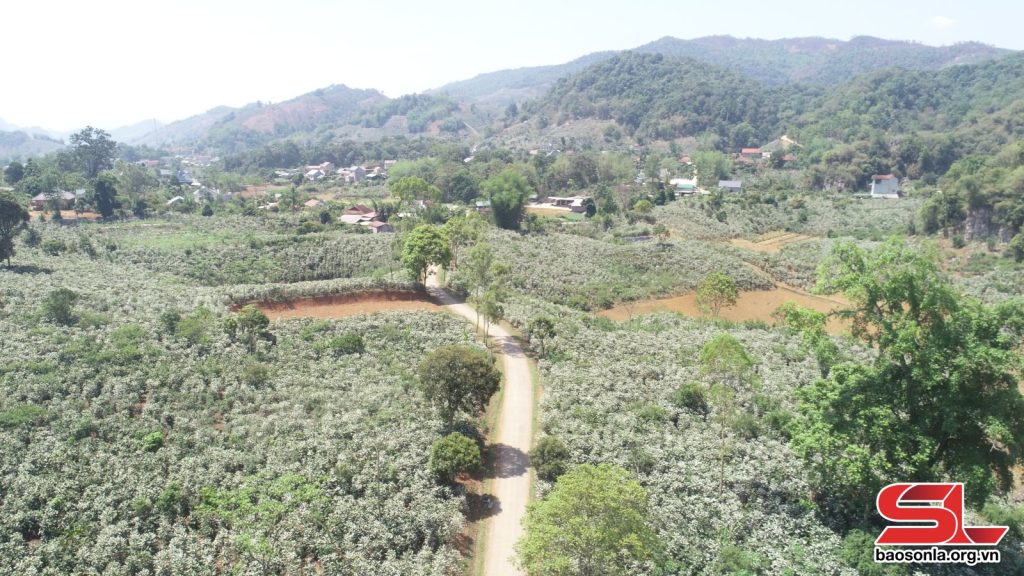Traditional craft village tourism in Quang Tri province offers visitors a deeper understanding of the cultural significance and local craftsmanship embodied in each product, while also boosting income for residents through the sale of these items to tourists. However, the potential of traditional craft village tourism has yet to be fully realized and developed to its fullest extent.
The educational experience tours organized by Amazing English Tour (AET), led by Director Nguyen Thi Hai Oanh, often take students to explore traditional craft villages, including the Bo Lieu conical hat village in Trieu Hoa commune (Trieu Phong) and the Tra Loc conical hat village in Hai Hung commune (Hai Lang).
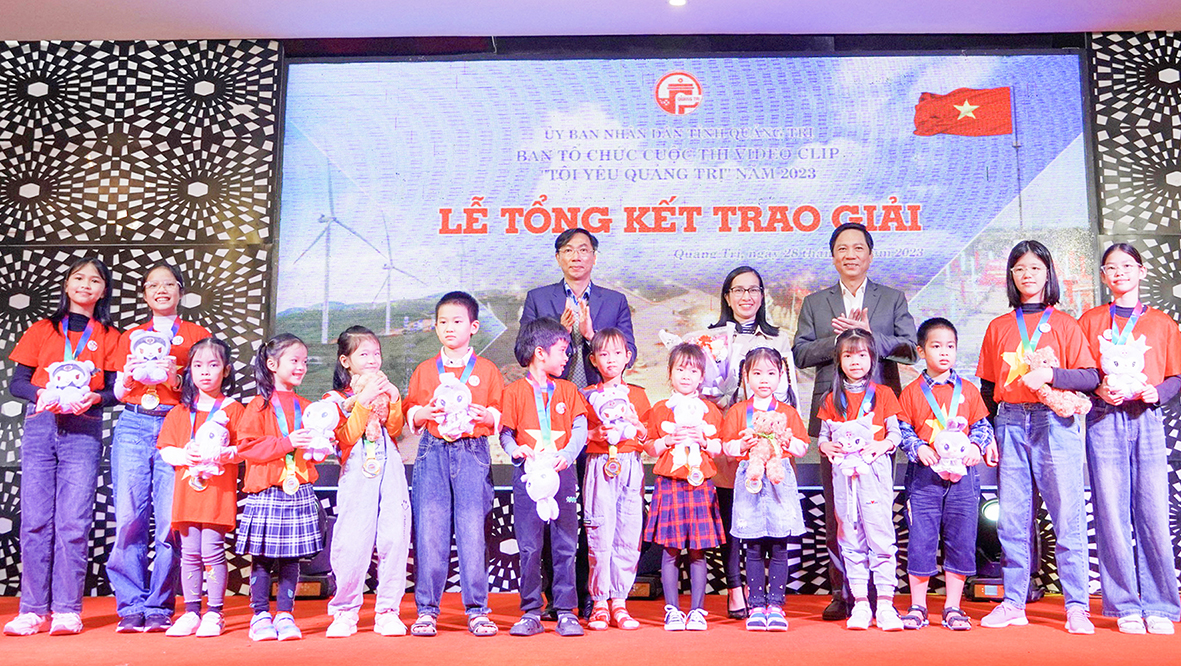
Provincial leaders of Quang Tri and the Department of Culture, Sports, and Tourism present awards to a group of students for creating a promotional video about the traditional conical hat craft village of Tra Loc. Photo: Tu Linh
As students approach the entrance to Bo Lieu village, they are greeted by a poetic sight: a stylized conical hat made from durable materials adorning the right side of the gate, symbolizing the village’s century-old tradition of conical hat making. Through learning about the craft, students not only gain a deeper appreciation for the cultural heritage of Vietnam but also immerse themselves in the atmosphere of a traditional rural village.
At the Tra Loc conical hat village in Hai Hung commune, students get hands-on experience in the various stages of hat making, and the excitement peaks when they can take home the conical hats they crafted themselves as souvenirs.
Nguyen Hong Son, a participant in AET’s educational experience tour, expressed his excitement about making a conical hat with his own hands. He shared that he had always wondered how such beautiful hats were made, and through this experience, he gained a deeper understanding of the craftsmanship and cultural value that the village has preserved and passed down through generations.
A representative from the Tra Loc conical hat production cooperative in Hai Hung commune explained that nearly 250 households are involved in producing conical hats. The process requires several intricate steps, starting with raw materials sourced from the province’s mountainous districts. These materials undergo meticulous preparation to create the perfect components for crafting beautiful conical hats. Annually, the cooperative and village produce over 30,000 conical hats, serving both local and regional markets.
To meet market demands, the artisans of Tra Loc continuously improve their skills, while local authorities in Hai Lang district and Quang Tri province have organized training sessions to enhance the craftsmanship, such as adding embroidery and painting on the hats. These efforts have attracted more tourists to the village, who buy the products as souvenirs.
Director Nguyen Thi Hai Oanh mentioned that Quang Tri province has significant potential for tourism focused on traditional craft villages. Currently, the company is surveying additional villages to design tours that cater to the diverse interests of different tourist groups.
The province boasts 15 recognized craft villages, with many of their traditional products having a history of hundreds of years. Among these, Van Phong broom village (Hai Lang) and Dinh Son Herbal Medicine Village (Cam Lo) stand out. The 11 traditional craft villages include: Kim Long rice wine, My Thuy fish sauce, Phuong Lang wet cakes, Tra Loc conical hats, Van Quy conical hats, Van Tri conical hats (Hai Lang); Bo Lieu conical hats, Gia Dang fish sauce, Linh Chieu vermicelli, Thuong Trach vermicelli (Trieu Phong); and Cam Thach rice cakes (Cam Lo). Additionally, there are two traditional crafts: Lam Thuy bean sprouts and My Chanh ginger candy (Hai Lang).
Nguyen Duc Tan, Director of the Provincial Investment, Trade, and Tourism Promotion Center, noted that traditional craft villages are becoming increasingly important for tourism development. Handicrafts produced by these villages are seen as cultural and artistic symbols of each region, attracting visitors.
A prime example of integrating craft villages with tourism is Tra Loc conical hat village, where locals have creatively engaged tourists in the craft-making process, effectively promoting their products and sparking visitor interest. The symbiotic relationship between tourism and traditional craft villages enhances both industries.
However, many traditional craft villages in Quang Tri have yet to fully embrace the connection between their products and tourism, despite government initiatives encouraging such integration. Most villages lack the infrastructure to showcase their crafts to visitors, and community involvement in tourism development remains low.
A crucial shift is needed for these villages to produce what tourists want, rather than just what they currently have. Although tourism companies are increasingly interested in traditional craft villages, they have yet to fully integrate these villages into their tour packages.
Nguyen Duc Tan emphasized that the potential for traditional craft village tourism in the province is undeniable, serving as a foundation for green and sustainable tourism. However, more efforts are needed to avoid wasting this valuable resource. To help craft villages market themselves and connect with tourism, coordinated efforts are essential.
In the short term, it is important to sell traditional handicrafts from these villages at tourist sites, gradually raising awareness among visitors. Establishing a dedicated space to showcase the province’s craft villages at strategic locations would also help promote these products.
For long-term success, turning craft villages into attractive tourist destinations requires investment in transportation infrastructure, visitor facilities, and demonstration sites; workforce training; and promotional activities. Support from government authorities and alignment of policies with comprehensive solutions are also crucial to encourage and support the sustainable development of traditional craft village tourism.
The People’s Committee of Quang Tri Province has issued a plan to implement Resolution No. 12 dated April 15, 2022, from the Provincial People’s Council. This resolution outlines policies to support the development of tourism in the province during the 2022–2030 period. The plan aims to encourage and assist businesses, cooperatives, tourism management boards, and households in investing in tourism activities within the province. It seeks to effectively utilize the province’s tourism potential and resources, attract labor, create jobs, improve the quality of human resources, and increase provincial revenue. Additionally, the plan contributes to the development of agricultural and rural tourism and helps mitigate the severe impacts of COVID-19, with the goal of making tourism a key economic sector in the province’s economic structure.
The plan includes various support policies, such as assistance in zoning plans for 1/2000 scale tourism areas, enhancing the quality of community tourism sites, investing in eco-tourism and community tourism areas, and building infrastructure at historical and cultural sites to develop tourism. It also provides support for training and developing tourism human resources, promoting tourism, and applying information technology in tourism business operations.
The People’s Committee emphasizes that the implementation of these support policies must be fair, transparent, and focused on selecting the right beneficiaries, avoiding unnecessary complications for businesses and organizations. Provincial departments, district, town, and city-level People’s Committees are required to work closely together, enhance inspections, and promptly provide support to address any difficulties. This coordination aims to ensure that businesses and organizations involved in tourism development can easily access the support policies.
Ngoc Mai – Tu Linh
Quang Tri Newspape – en.baoquangtri.vn

